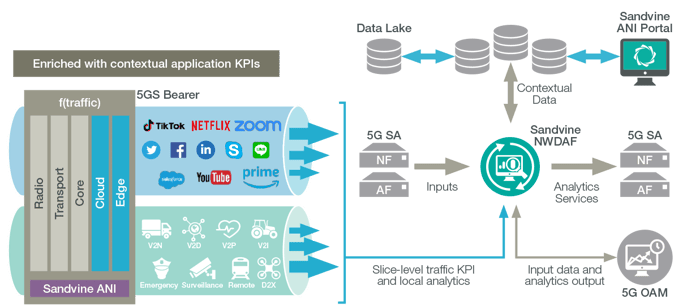Data is the currency of the digital economy and the telecommunications industry has some of the richest data. Mining that data in real time using Sandvine’s cloud native 5G Service Intelligence Engine (Network Data Analytics Function or NWDAF) helps improve network performance and deliver innovative services.
5G promises a world of possibilities — from enabling the Internet of Things (IoT) to reach mass market scale, to supporting autonomous vehicles, smart cities and factories, to delivering Fixed Wireless Access (FWA) and enhanced mobile broadband to smart homes.
To achieve these goals, service providers need to:
Understand their network
Measure and predict service performance
Proactively assure quality of experience (QoE) for each application
And all of these needs must be automated to maximize return on investment. The 3GPP-defined NWDAF provides a centralized, predictive analytics platform for 5G core networks. Without this critical function the network would struggle to deliver the performance required for more complex 5G network slices.
Sandvine has engineered an enriched 3GPP standards-compliant and cloud native 5G Service Intelligence Engine (NWDAF) which incorporates proven machine learning and the industry’s most advanced traffic classification technology. The result is an unmatched, automated service intelligence that unleashes the true potential of 5G networks.

5G Service Intelligence Engine is designed with next generation cloud native principles with software provided as Cloud Native Network Functions (CNFs)
Enriched predictive analytics using accurate and contextual KPIs from Sandvine’s ActiveLogic data plane element and Maestro control plane element
Wide range of use cases across the following categories: Quality of Service and Policy, Service Delivery, Mobility Management, Service Assurance, and Security
Dashboards that can be visualized through Sandvine’s Application and Network Intelligence (ANI) Portal providing service providers contextual use case information by network type, network slices, users, devices, services, and technology, all aligned with standard, service provider-defined workflows
Allows service providers to introduce a set of net new 5G-based services
Assures QoE and SLAs for 5G services by proactively adapting to network conditions
Prevents performance issues by predicting network deterioration before it happens and taking corrective action
Maximizes return on network capacity investments
Prevents over-engineering by continuously tuning the network and balancing network loads
QoE-based insights for predictive service experience
QoS change stats in a specific area during specific time in the past or the predictions in future
Observed service experience in the form of stats/predictions for applications in a slice